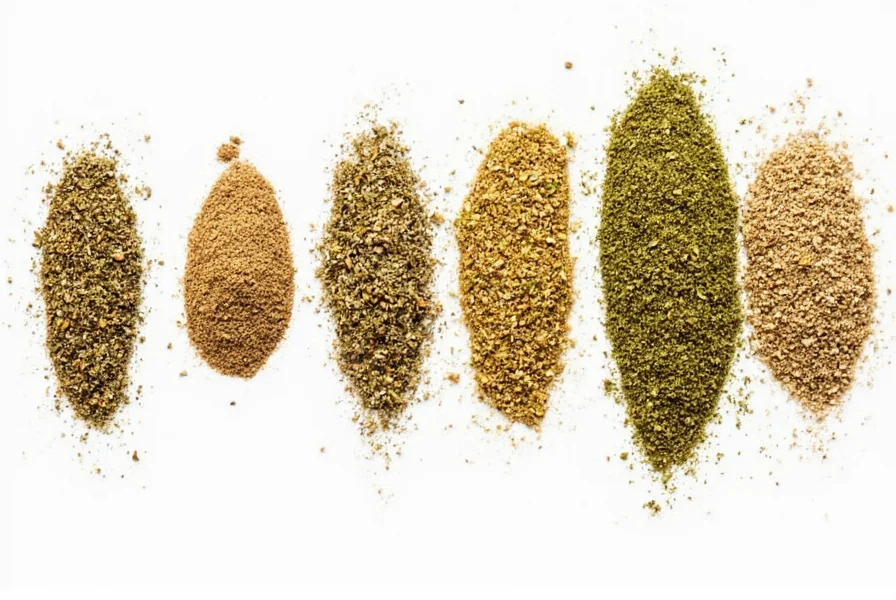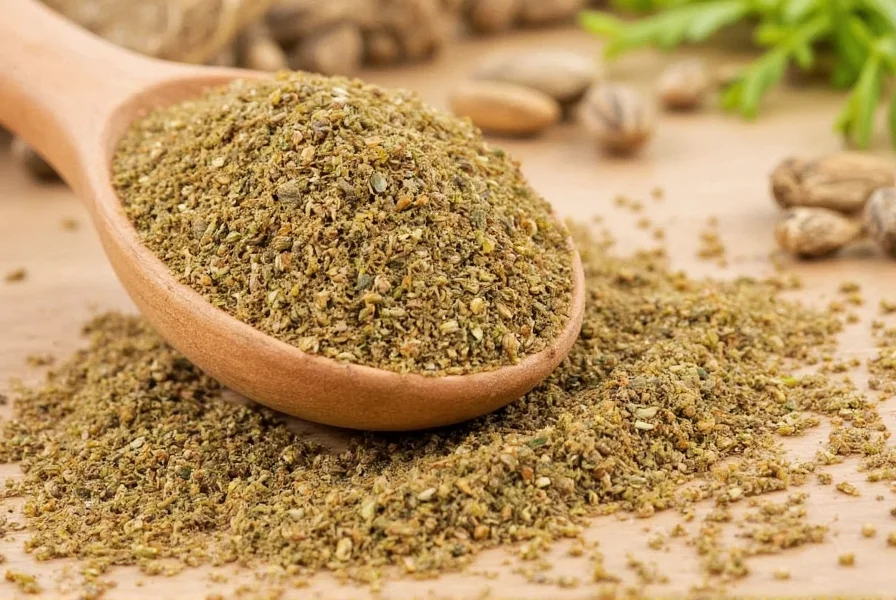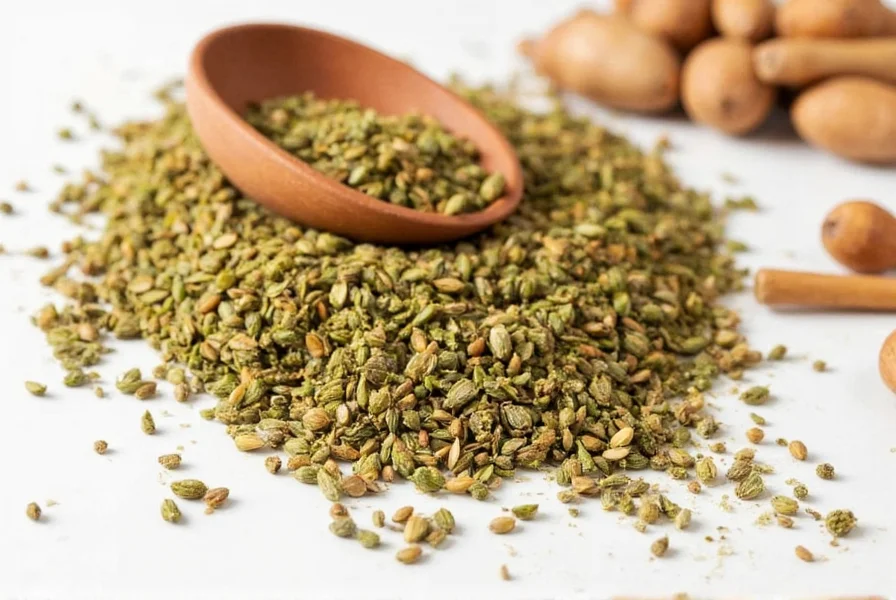Understanding coriander spice begins with recognizing its dual identity in the culinary world. While many confuse it with cilantro, they represent different parts of the same plant at different growth stages. Coriander spice specifically comes from the mature seeds, offering a completely different flavor profile than the fresh herb. This distinction forms the foundation for properly using this ancient spice in modern cooking.
What Exactly Is Coriander Spice?
Botanically classified as Coriandrum sativum, coriander produces both the fresh herb known as cilantro (leaves and stems) and the spice we call coriander (the dried seeds). The seeds develop after the plant flowers, forming small, round, beige-to-tan spheres approximately 1/8 inch in diameter. When harvested and dried, these seeds become the spice known globally as coriander.
Historically, coriander seeds have been used for over 7,000 years, with evidence of their presence in ancient Egyptian tombs and mentioned in Sanskrit texts dating back to 5,000 BCE. The spice traveled along early trade routes, becoming integral to Middle Eastern, Indian, Mediterranean, and later European cuisines.
Flavor Profile and Sensory Characteristics
Coriander spice offers a complex flavor profile that's simultaneously warm, nutty, citrusy, and slightly sweet with floral undertones. When raw, the seeds have a more lemony, almost soapy quality (though less pronounced than in cilantro leaves). Toasting transforms their flavor, deepening the nuttiness and reducing any potential soapy notes.
Compared to similar spices:
| Spice | Flavor Profile | Best Culinary Applications |
|---|---|---|
| Coriander seeds | Warm, nutty, citrusy, slightly sweet | Curries, spice blends, baked goods, pickling |
| Cumin | Earthy, smoky, slightly bitter | Mexican, Indian, Middle Eastern dishes |
| Fennel seeds | Sweet, licorice-like | Italian sausages, breads, seafood dishes |
| Caraway seeds | Earthy, anise-like, slightly peppery | Rye bread, cabbage dishes, goulash |
Nutritional Composition and Potential Health Benefits
Coriander seeds contain several beneficial compounds including linalool (responsible for much of their aroma), pinene, and various antioxidants. A single tablespoon (6g) of ground coriander provides:
- Approximately 20 calories
- 1.5g dietary fiber
- 18% of the Daily Value for iron
- 6% of the Daily Value for magnesium
- Small amounts of calcium, potassium, and manganese
Research suggests potential health benefits associated with coriander spice, though more human studies are needed. Laboratory studies indicate coriander may support digestive health by stimulating enzyme secretion and potentially help maintain healthy blood sugar levels. The spice also demonstrates antioxidant properties that may combat oxidative stress.
Global Culinary Applications
Coriander spice features prominently in diverse culinary traditions worldwide. In Indian cooking, it's a fundamental component of garam masala and curry powders. Middle Eastern cuisine uses it in za'atar blends and meat rubs. European baking incorporates it into rye breads and certain pastries. Latin American cooking features it in adobo blends and pickling solutions.
When exploring how to use coriander seeds in cooking, consider these regional applications:
- Indian: Combined with cumin, turmeric, and chili in curry bases
- Middle Eastern: Paired with sumac and sesame in spice blends
- Mediterranean: Added to tomato-based sauces and vegetable dishes
- European: Incorporated into bread doughs and pickling brines
- Mexican: Used in adobo seasoning for meats and vegetables

Optimal Selection and Storage Practices
For the best flavor when working with coriander spice, proper selection and storage are essential. Whole seeds maintain their potency significantly longer than pre-ground versions. When purchasing, look for seeds that are uniform in color (light tan to beige), free from cracks, and have a pleasant citrus aroma.
Storage recommendations:
- Keep whole seeds in an airtight container away from light and heat
- Store in a cool, dark cupboard (not above the stove)
- Whole seeds retain optimal flavor for 1-2 years; ground coriander for 6-8 months
- For extended storage, keep in the freezer in an airtight container
Mastering Coriander Preparation Techniques
Understanding how to toast coriander seeds properly transforms their flavor profile. The dry-toasting method enhances their nuttiness while reducing any potential soapy notes. To toast coriander seeds:
- Place whole seeds in a dry skillet over medium heat
- Shake the pan frequently for 1-3 minutes until fragrant
- Seeds should darken slightly and emit a nutty aroma
- Immediately transfer to a plate to stop cooking
- Cool completely before grinding or using
For recipes requiring ground coriander, grinding seeds just before use provides dramatically better flavor than pre-ground versions. A dedicated spice grinder or mortar and pestle works best for this purpose.
Effective Substitutes and Alternatives
When you need coriander spice substitutes, several options exist depending on your recipe. Cumin offers earthiness but lacks the citrus notes. Caraway seeds provide similar texture but with stronger anise flavor. For many applications, a combination of cumin and a touch of lemon zest can approximate coriander's profile.
Important substitution considerations:
- In Indian recipes: Use equal parts cumin with a pinch of fennel
- In baking: Try cardamom or allspice in smaller quantities
- In pickling: Mustard seeds with lemon zest work well
- For curry blends: Increase cumin and add a touch of cinnamon

Practical Cooking Applications
When incorporating coriander spice into your cooking, timing matters. For soups and stews, add whole seeds early in the cooking process to allow flavors to infuse. For more delicate dishes, add ground coriander later to preserve its volatile oils. In spice blends like curry powder or garam masala, coriander typically forms the base note that supports other spices.
Professional chefs often recommend toasting coriander seeds before grinding for maximum flavor extraction. This simple step enhances the spice's natural oils and creates a more complex flavor profile that elevates entire dishes. The difference between using raw versus toasted and freshly ground coriander can be dramatic in finished recipes.
Frequently Asked Questions
What is the difference between coriander and cilantro?
Coriander and cilantro come from the same plant (Coriandrum sativum) but refer to different parts. Coriander specifically refers to the dried seeds used as a spice, while cilantro refers to the fresh leaves and stems. The seeds have a warm, nutty, citrusy flavor, while the leaves have a bright, herbal taste that some describe as soapy.
Can I substitute coriander seeds for ground coriander in recipes?
Yes, but with adjustments. One tablespoon of whole coriander seeds equals approximately 2 1/4 teaspoons of ground coriander. For best results, toast and grind the seeds yourself just before using. Whole seeds provide more intense flavor when toasted properly compared to pre-ground versions.
Why does my coriander taste soapy?
Some people have a genetic predisposition that causes coriander (both seeds and leaves) to taste soapy. Toasting coriander seeds can reduce this perception by transforming their chemical compounds. If you experience this, try toasting the seeds before grinding, which often minimizes the soapy notes while enhancing nutty, citrus flavors.
How long does coriander spice stay fresh?
Whole coriander seeds maintain optimal flavor for 1-2 years when stored properly in an airtight container away from light and heat. Ground coriander loses potency more quickly, typically within 6-8 months. For maximum freshness, store whole seeds and grind them as needed rather than purchasing pre-ground coriander.
What are the best dishes to use coriander spice in?
Coriander spice works exceptionally well in Indian curries, Middle Eastern spice blends, pickling solutions, bread doughs, and roasted vegetable dishes. It's particularly effective in tomato-based sauces, lentil dishes, and with root vegetables. For baking, it complements citrus flavors and works well in certain cookie and cake recipes.











 浙公网安备
33010002000092号
浙公网安备
33010002000092号 浙B2-20120091-4
浙B2-20120091-4